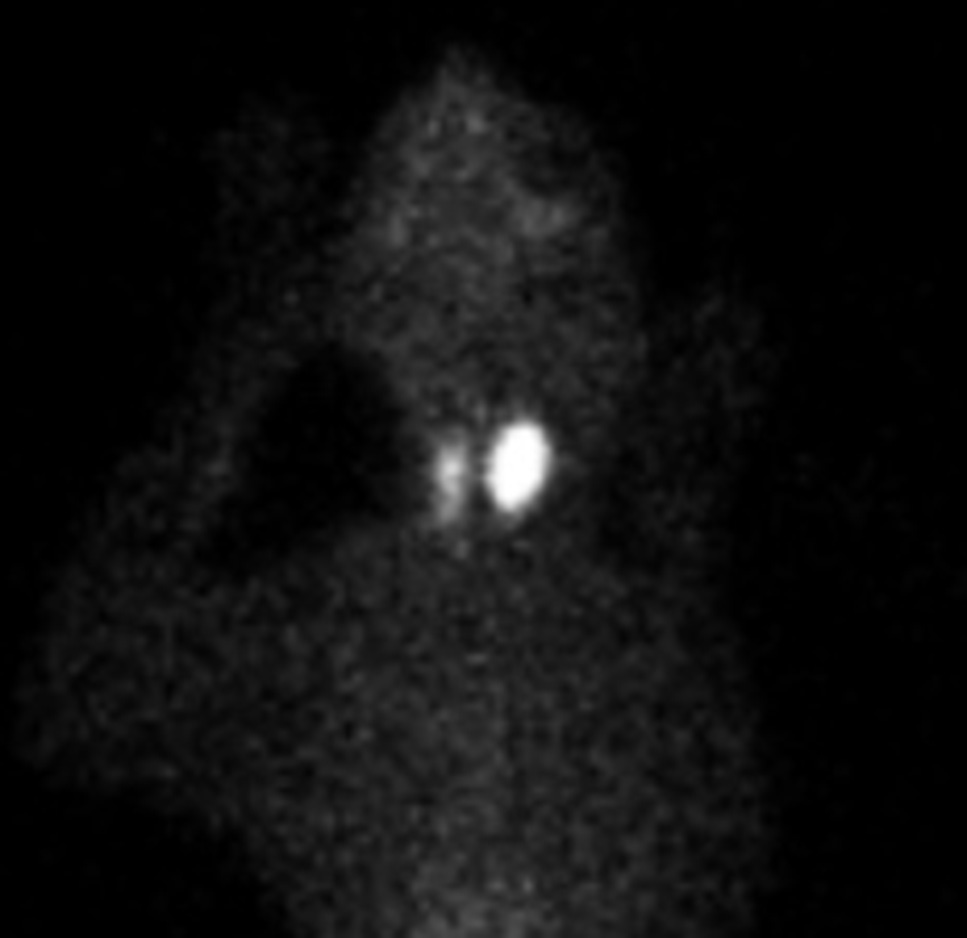
Nuclear Scintigraphy
Nuclear scintigraphy uses very small, tracer amounts of radioactive molecules to diagnose diseases involving bone, soft tissues and vessels. We can attach these molecules to agents that bind to bone lesions, soft tissue tumors and sites of infection. This very sensitive technique can often diagnose diseases not visible with other imaging methods.
The radiotracer eventually collects in the area of the body being examined, where it gives off energy in the form of gamma rays. This energy is detected by a device called a gamma camera. These devices work together with a computer to measure the amount of radiotracer absorbed by the body, and produce special images offering details on both the structure and function of organs and other internal body parts.Nuclear scintigraphy is used to diagnose: portosystemic shunts, kidney function, distribution of cancer in the body, and thyroid disease.
